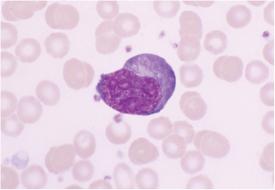Ehrlichia

There are two kinds of ehrlichiosis, both of which are caused by tick-borne rickettsial parasites called Ehrlichia that infect different kinds of white blood cells. In HME (human monocytic ehrlichiosis), they infect monocytes. In HGE (human granulocytic ehrlichiosis), they infect granulocytes. HGE was renamed anaplasmosis in 2003.
Ticks carry many Ehrlichia-like parasites that have not been identified yet. It is likely that the lone star tick transmits HME and that the deer tick transmits HGE.
Ehrlichiosis (HME) was originally thought to be only an animal disease. It was described in humans in 1987 and is now found in 30 states, predominately in the southeast, south-central, and mid-Atlantic states, Europe and Africa. Anaplasmosis (HGE)in humans was first identified in 1990 in a Wisconsin man. Before that it was known to infect horses, sheep, cattle, dogs and cats. It occurs in the upper midwest, northeast, the mid-Atlantic states, northern California, and many parts of Europe. Studies suggest that in endemic areas as much as 15% to 36% of the population has been infected, though often it is not recognized.
Symptoms
The clinical manifestations of ehrlichiosis and anaplasmosis are the same. Each is often characterized by sudden high fever, fatigue, muscle aches, headache. The disease can be mild or life-threatening. Severely ill patients can have low white blood cell count, low platelet count, anemia, elevated liver enzymes, kidney failure and respiratory insufficiency. Older people or people with immune suppression are more likely to require hospitalization. Deaths have occurred.
Diagnosis
Diagnosis is limited by our current ability to test for only two species. Ehrlichia parasites multiply inside host cells, forming large mulberry-shaped clusters called morulae which doctors can sometimes see on blood smears. The infection still can easily be missed. The doctor may suspect ehrlichiosis/anaplasmosis in a patient who does not respond well to treatment for Lyme disease.
Treatment
The treatment of choice for ehrlichiosis/anaplasmosis is doxycycline, with rifampin recommended in case of treatment failure.




















Can you have a diagnosis of Lyme and Ehrlichiosis? My husband is being treated for Lyme (original diagnosis was Rocky Mountain Spotted Fever) with silver IV therapy. He’s been sick over 6 years. Truly confused! Do you know if this is an effective treatment?
Thank you